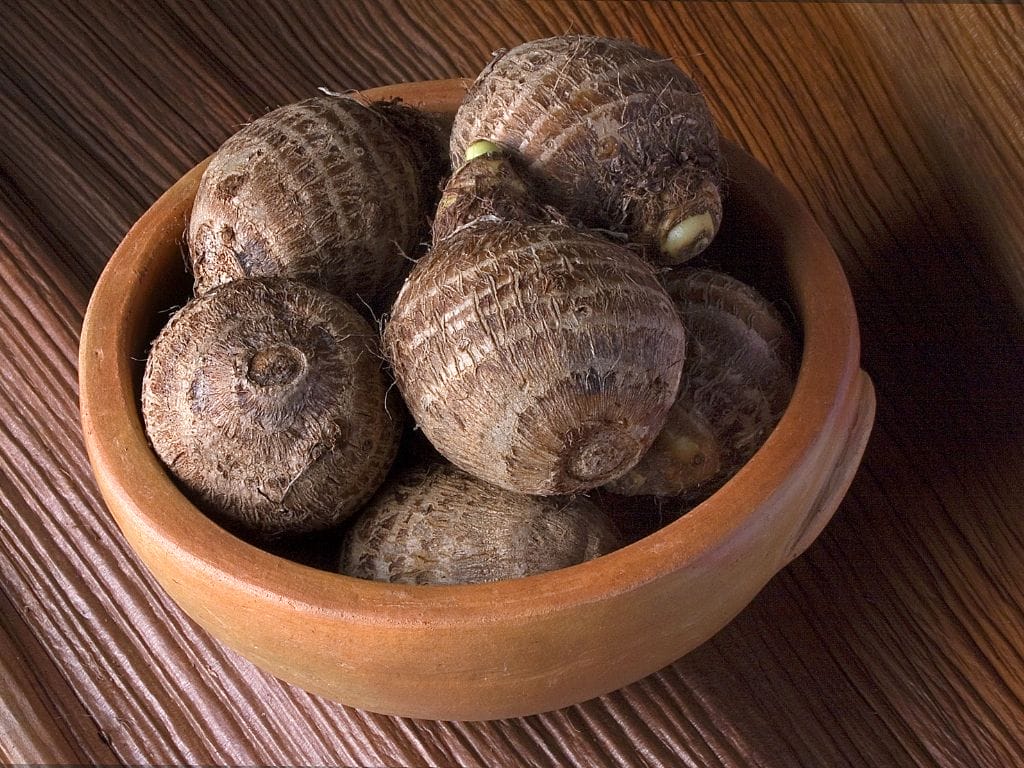10 Interesting Facts about Yam
Introduction
Yam is a tuber vegetable that is often confused with sweet potato, but they are actually very different. Yam belongs to the genus Dioscorea, which has over 600 species, while sweet potato belongs to the genus Ipomoea, which has only one species. Yam is native to Africa and Asia, while sweet potato is native to the Americas. Yam is starchier and drier than sweet potato, which is sweeter and moister. Yam has a rough brown skin and white or purple flesh, while sweet potato has a smooth red or orange skin and yellow or orange flesh. Yam is more widely grown and consumed in the tropics, especially in West Africa, where it is a staple food crop. However, yam also has a connection to Singapore’s culture and cuisine, as you will discover in this article. Here are 10 interesting facts about yam that will make you appreciate this versatile vegetable more.
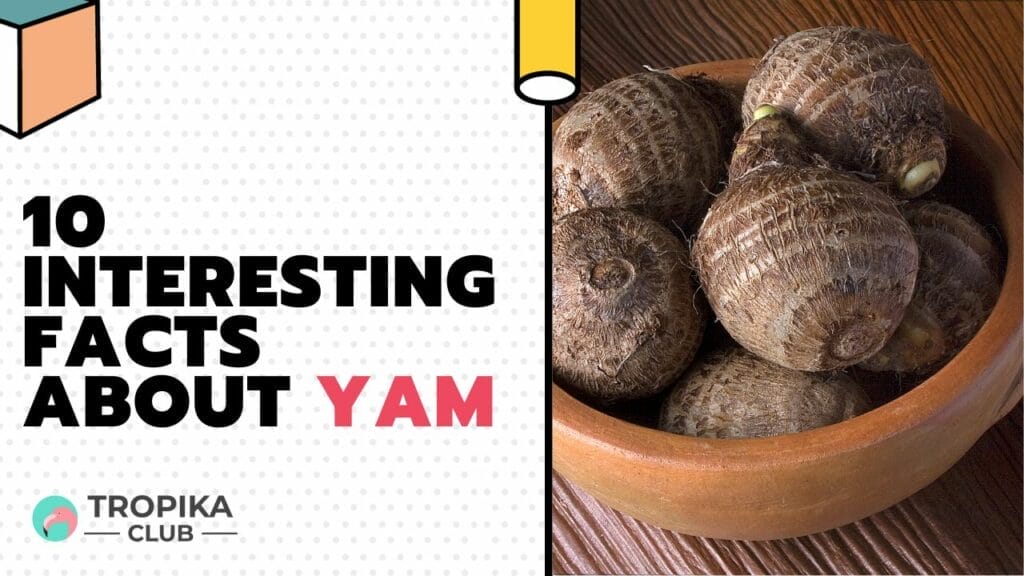
Table of contents
- Introduction
- No Time to Read? Here’s a Snappy Summary of This Article
- 1. Yam is one of the oldest cultivated crops in the world
- 2. Yam has many health benefits
- 3. Yam can be used for various purposes
- 4. Yam has many varieties and names
- 5. Yam is a symbol of fertility and prosperity
- 6. Yam is a staple food for many people
- 7. Yam is a delicacy for some people
- 8. Yam is related to Singapore’s culture and cuisine
- 9. Yam can be grown in Singapore
- 10. Yam faces some challenges and opportunities
- Conclusion
- Meanwhile, Check Out Tropika Club’s Ecosystem of Websites
No Time to Read? Here’s a Snappy Summary of This Article
- Ancient Roots: Yam cultivation dates back thousands of years, with evidence of its consumption found in archaeological sites worldwide.
- Nutrient Powerhouse: Packed with vitamins, minerals, and fiber, yams offer a nutritious punch for a healthy diet.
- Not a Sweet Potato: Despite the confusion, yams and sweet potatoes are distinct—yams are starchy tubers with rough, scaly skin.
- Global Staples: A dietary cornerstone in Africa, Asia, and the Caribbean, yams play a crucial role in diverse cuisines.
- Massive Varieties: With over 600 species, yams come in various shapes, sizes, and colors, adding visual intrigue to dishes.
- Climbing Wonders: Yams are climbing plants, showcasing their adaptability and unique growth habits in agricultural landscapes worldwide.
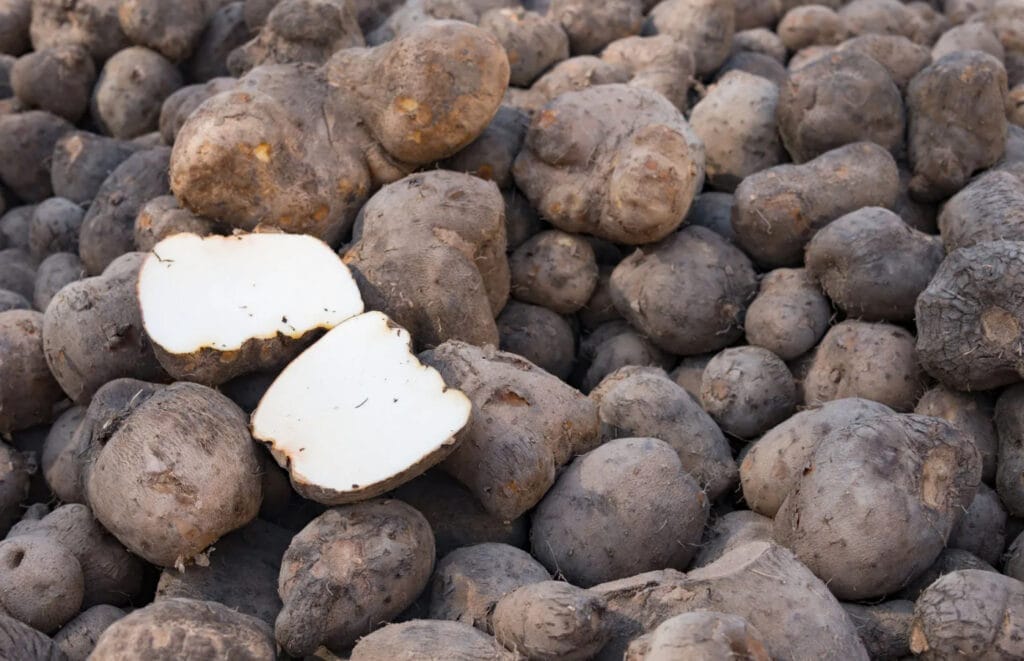
1. Yam is one of the oldest cultivated crops in the world
Yam has been cultivated for thousands of years by various civilizations in Africa and Asia. According to archaeological evidence, yam was domesticated independently on three different continents: Africa (Dioscorea rotundata), Asia (Dioscorea alata), and the Americas (Dioscorea trifida). Some of the oldest yam remains have been found in Nigeria, dating back to 8000 BC. Yam was also an important crop for ancient Egyptians, who used it as a source of food and medicine.
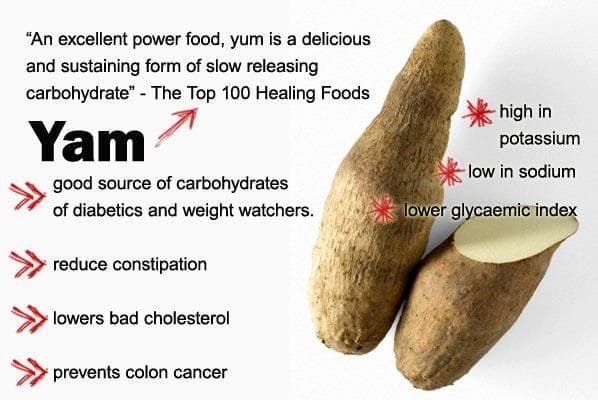
2. Yam has many health benefits
Yam is rich in carbohydrates, fiber, vitamin C, vitamin B6, potassium, manganese, and antioxidants. It can provide many health benefits, such as: – Boosting energy and immunity – Improving digestion and bowel movement – Lowering blood pressure and cholesterol – Regulating blood sugar and insulin levels – Enhancing skin and hair health – Preventing anemia and scurvy – Supporting bone and muscle health – Protecting against oxidative stress and inflammation – Fighting against infections and diseases.

3. Yam can be used for various purposes
Yam is not only a nutritious and delicious food, but also a versatile ingredient for various purposes. The tuber can be eaten raw or cooked in various ways, such as boiling, baking, frying, roasting, steaming, mashing, or grating. The tuber can also be processed into flour, starch, chips, noodles, or alcohol. The tuber skin can be used to make dye, soap, or paper. The tuber extract can be used to make cosmetics, pharmaceuticals, or pesticides. The tuber vine can be used to make ropes or baskets. The tuber leaves can be used as animal feed or fertilizer.

4. Yam has many varieties and names
Yam has over 600 species and thousands of cultivars, each with different characteristics and names. Some of the most common yam varieties are: – White yam (Dioscorea rotundata): The most widely cultivated yam in Africa. It has a white flesh and a brown skin that can be smooth or rough. It can grow up to 2 meters long and weigh up to 60 kilograms. It has a mild flavor and a dry texture. – Yellow yam (Dioscorea cayenensis): A popular yam in Jamaica and the Caribbean. It has a yellow flesh and a brown skin that can be smooth or rough. It can grow up to 1 meter long and weigh up to 15 kilograms. It has a sweet flavor and a moist texture. – Water yam (Dioscorea alata): The most widely cultivated yam in Asia. It has a white or purple flesh and a brown skin that can be smooth or rough. It can grow up to 3 meters long and weigh up to 35 kilograms. It has a bland flavor and a sticky texture. – Chinese yam (Dioscorea polystachya): A common yam in China and Japan. It has a white flesh and a brown skin that can be smooth or hairy. It can grow up to 1 meter long and weigh up to 3 kilograms. It has a sweet flavor and a crisp texture. – Purple yam (Dioscorea alata var purpurea): A rare yam in Southeast Asia and the Pacific Islands. It has a purple flesh and a brown skin that can be smooth or rough. It can grow up to 1 meter long and weigh up to 2 kilograms. It has a nutty flavor and a creamy texture. Yam also has many names in different languages and regions, such as: – Ube in the Philippines – Taro in Malaysia and Singapore – Kand in India – Suran in Pakistan – Jimikand in Nepal – Oca in New Zealand – Ñame in Spain and Latin America – Inhame in Brazil and Portugal – Igname in France and Italy – Yamswurzel in Germany

5. Yam is a symbol of fertility and prosperity
Yam is a symbol of fertility and prosperity in many cultures, especially in Africa. Yam is associated with the goddesses of fertility, such as Oshun in Yoruba, Asase Yaa in Akan, and Ala in Igbo. Yam is also considered a sacred food that can bring blessings, abundance, and protection. Yam festivals are celebrated in many parts of Africa to mark the harvest season and honor the ancestors, gods, and spirits. Some of the most famous yam festivals are: – The New Yam Festival (Iri Ji) in Nigeria: A celebration of the first yam crop of the year by the Igbo people. It involves rituals, dances, music, masquerades, and feasts. It is held between July and October. – The Homowo Festival in Ghana: A celebration of the end of the famine by the Ga people. It involves rituals, parades, drumming, singing, and sprinkling of kpekple (a dish made from fermented corn and yam). It is held between May and August. – The Yam Festival (Bwola) in Uganda: A celebration of the yam harvest by the Acholi people. It involves rituals, ceremonies, games, contests, and performances. It is held between November and December.
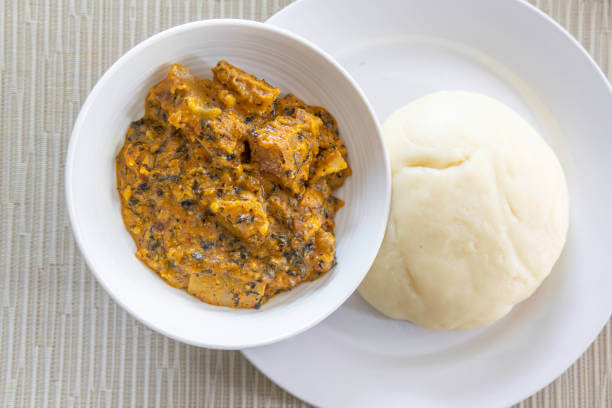
6. Yam is a staple food for many people
Yam is a staple food for many people around the world, especially in West Africa, where it accounts for about 70% of the daily calorie intake. Yam provides a cheap and reliable source of energy and nutrition for millions of people who live in poverty or food insecurity. Yam also plays a vital role in food security and sovereignty, as it is resilient to drought, pests, diseases, and climate change. Yam can be stored for up to six months without refrigeration or processing, making it available throughout the year. Yam can also be grown on marginal lands that are unsuitable for other crops, such as slopes or swamps.
_
Read Also:
Top 10 Best Chilli Crab in Singapore
_

7. Yam is a delicacy for some people
Yam is a delicacy for some people who enjoy its unique flavor and texture. Yam can be prepared in various ways to create different dishes that suit different tastes and occasions. Some of the most popular yam dishes are: – Pounded yam (Iyan): A smooth dough made from boiled yam that is pounded with a mortar and pestle. It is eaten with soup or stew, such as egusi or okra. It is a traditional dish in Nigeria and other parts of West Africa. – Fried yam (Dun Dun): Slices or cubes of yam that are deep-fried until golden and crispy. They are eaten as a snack or a side dish with sauce or ketchup. They are popular in Ghana and other parts of West Africa. – Roasted yam (Boli): Whole or halved yam that are roasted over an open fire until charred and soft. They are eaten with palm oil or butter as a street food or a breakfast item. They are common in Nigeria and other parts of West Africa. – Boiled yam (Fu Fu): Chunks of yam that are boiled until soft and mashed with a fork or a spoon. They are eaten with soup or stew, such as peanut or tomato. They are typical in Cameroon and other parts of Central Africa. – Baked yam (Asaro): Cubes of yam that are baked with palm oil, tomatoes, onions, peppers, spices, and sometimes meat or fish. They are eaten as a main course or a side dish with bread or rice. They are special in Nigeria and other parts of West Africa. – Grated yam (Oto): Grated raw yam that is mixed with palm oil, eggs, onions, peppers, salt, and sometimes smoked fish or meat. They are cooked into a thick paste or cake that is eaten with sauce or soup. They are festive in Ghana and other parts of West Africa. – Purple yam (Ube Halaya): Purple yam that is cooked with coconut milk, sugar, butter, and sometimes cheese or condensed milk. They are cooked into a thick paste or cake that is eaten with sauce or soup. They are festive in Ghana and other parts of West Africa. – Purple yam (Ube Halaya): Purple yam that is cooked with coconut milk, sugar, butter, and sometimes cheese or condensed milk. They are formed into a jam or a pudding that is eaten as a dessert or a snack. They are popular in the Philippines and other parts of Southeast Asia.

8. Yam is related to Singapore’s culture and cuisine
Yam has a long history and a strong presence in Singapore’s culture and cuisine. Yam was introduced to Singapore by the early immigrants from China, India, and Malaysia, who brought their own varieties and recipes of yam. Yam became a part of the local food heritage, as it was adapted to suit the diverse tastes and preferences of the people. Yam is also a symbol of longevity and prosperity in Chinese culture, which is why it is often served during festive occasions, such as Chinese New Year, Mid-Autumn Festival, and birthdays. Some of the most famous yam dishes in Singapore are: – Yam cake (Orh Kueh): A savory cake made from steamed yam, rice flour, dried shrimp, mushrooms, shallots, and seasonings. It is cut into slices and fried with eggs, spring onions, and chili. It is eaten as a breakfast item or a snack with sweet sauce or chili sauce. It is common in Teochew and Hokkien cuisine. – Yam paste (Orh Nee): A sweet paste made from mashed yam, sugar, oil, and water. It is topped with gingko nuts, pumpkin, coconut milk, and sometimes lard or shallots. It is eaten as a dessert or a snack with syrup or honey. It is typical in Teochew cuisine. – Yam abacus seeds (Suan Pan Zi): A chewy dish made from boiled yam and tapioca flour that are shaped into small balls resembling abacus beads. They are stir-fried with minced meat, mushrooms, dried shrimp, garlic, and seasonings. They are eaten as a main course or a side dish with rice or noodles. They are special in Hakka cuisine. – Yam ring (Fatt Put): A crispy ring made from deep-fried yam and flour that is filled with stir-fried chicken, cashew nuts, vegetables, and gravy. It is eaten as a main course or a side dish with rice or noodles. It is unique in Cantonese cuisine. – Yam ice cream (Ube Ice Cream): A creamy ice cream made from purple yam, milk, cream, sugar, and vanilla. It is served as a dessert or a snack with toppings such as cornflakes, red beans, or coconut flakes. It is popular in Filipino cuisine.
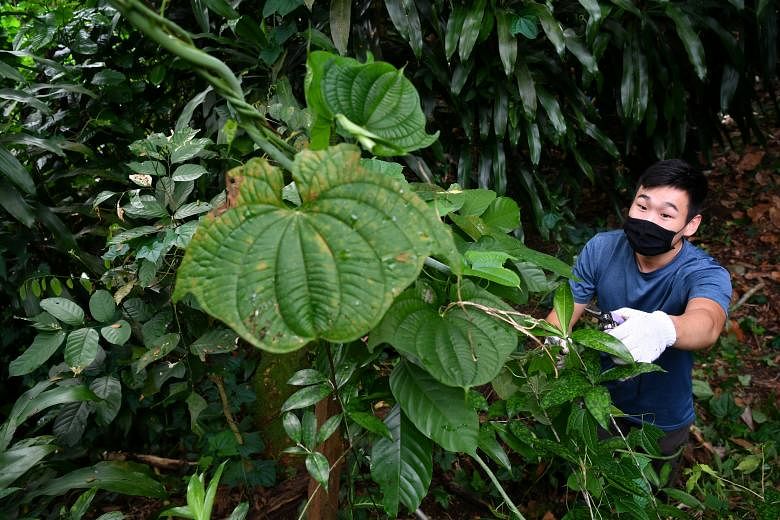
9. Yam can be grown in Singapore
Yam can be grown in Singapore’s tropical climate and soil conditions, as long as it has enough water, sunlight, and space. Yam can be planted from tuber pieces or vine cuttings that are buried in the ground or in pots. Yam can be harvested after six to twelve months of growth, depending on the variety and size of the tuber. Yam can be stored in a cool and dry place for up to six months without spoiling. Yam can also be propagated by tissue culture or genetic engineering to improve its yield and quality.

10. Yam faces some challenges and opportunities
Yam faces some challenges and opportunities in the modern world, as it competes with other crops and meets the changing demands of consumers. Some of the challenges that yam faces are: – Low productivity and profitability: Yam has a low yield per hectare compared to other crops, such as cassava or potato. Yam also has a high cost of production due to its labor-intensive cultivation, harvesting, processing, and storage methods. – Pest and disease problems: Yam is susceptible to various pests and diseases that can reduce its quality and quantity. Some of the common pests and diseases that affect yam are nematodes, weevils, borers, rot fungi, anthracnose fungi, mosaic viruses, and leaf spot bacteria. – Climate change impacts: Yam is sensitive to changes in temperature, rainfall, humidity, and carbon dioxide levels that can affect its growth and development. Some of the opportunities that yam has are: – Increased demand and consumption: Yam has a growing demand and consumption in both domestic and international markets due to its nutritional value, health benefits, culinary diversity, cultural significance. – Improved research and development: Yam has a potential for improvement through research and development that can enhance its agronomic traits, genetic diversity, post-harvest technologies, value addition, marketing strategies,and consumer preferences.
Conclusion
Yam is a vegetable that has many facts that will make you curious and hungry. It is one of the oldest cultivated crops in the world that has many health benefits and uses. It has many varieties and names that reflect its diversity and adaptability. It is a symbol of fertility and prosperity that is celebrated in many festivals and ceremonies. It is a staple food for many people that is prepared in various ways to create different dishes. It is related to Singapore’s culture and cuisine that is enjoyed by many locals and visitors. It can be grown in Singapore’s climate and soil conditions that are suitable for its growth. It faces some challenges and opportunities that can affect its future and potential. Yam is a vegetable that you should try and appreciate more, as it has a lot to offer for your taste buds and well-being.

FAQ FOR 10 INTERESTING FACTS ABOUT YAM
Q: Where can I buy different varieties of yams in Singapore?
A: Explore local wet markets, supermarkets, and specialty grocery stores for a diverse selection of yams in Singapore.
Q: Are yams suitable for a gluten-free diet?
A: Yes, yams are naturally gluten-free, making them a great choice for those with gluten sensitivity or celiac disease.
Q: Can I grow yams at home in Singapore’s climate?
A: While challenging, it’s possible to grow yams in Singapore. Opt for well-draining soil and provide a warm, tropical environment.
Q: How do I incorporate yams into Singaporean cuisine?
A: Try local favorites like “Orh Nee” (yam paste dessert) or add yams to traditional dishes for a unique twist.
Q: Are yams a good source of nutrition for children in Singapore?
A: Yes, yams are rich in essential nutrients and can be a wholesome addition to a child’s balanced diet.
Q: Can yams be used in vegetarian or vegan recipes?
A: Absolutely! Yams are versatile and make a delicious meat-free option in various vegetarian and vegan dishes.

Have an Article to Suggest?
Tropika Club is always looking for new and exciting content to feature in their magazine and they value the input of our readers. If you have any noteworthy content or articles that you believe would be a great addition to Tropika Club’s magazine, we are open to suggestions and encourage you to reach out to us via email at [email protected]. By doing so, Tropika Club values your expertise and knowledge in the matter and appreciates your willingness to help. We will review your recommendations and update our list accordingly
Meanwhile, Check Out Tropika Club’s Ecosystem of Websites
Tropika Club Magazine – Tropika Club Magazine is a Singapore-based publication that features articles on a wide range of topics with a focus on local businesses and content for the region. The magazine emphasizes supporting local businesses through its #SupportLocal initiative, which includes coverage of everything from neighborhood hawker stalls to aesthetic clinics in town. In addition to highlighting local businesses, Tropika Club Magazine also covers a variety of local content, including beauty, lifestyle, places, eats, and what’s on in Singapore and the Asia Pacific region.



